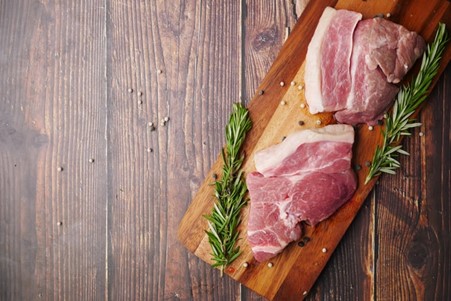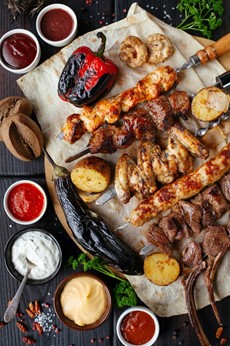Lamb is a very flavorful meat, but proper preparation is essential to getting the best taste and texture possible. This guide to the different cuts of lamb by Superior Farms gives simple tips for choosing the right lamb for every dish, and tips for cooking it to perfection.



Lamb shoulder cuts
Lamb shoulder is readily available, affordable, and packed with flavor. However, it contains a lot of connective tissue, so it needs to be cooked long and slow over low heat for it to become tender and moist.
For stews, choose meat that’s against the bone—it is more tender, and the bone adds flavor the broth. If the chunks are too large, cut the meat against the grain. Marinades that contain some acids, such as wine or lemon, can also help tenderize the meat.
Sear the lamb shoulder chunks to lock in the juices and add depth to the flavor. Then, cook it in the oven over low heat in a Dutch oven or any good, heavy pot that can maintain temperature well. Alternatively, use a slow cooker.
Whole lamb shoulder is fantastic for roasts. It is less expensive than lamb leg, and less likely to dry out if accidentally overcooked making it a “safer” choice for beginner cooks.
It is best to let the lamb marinate overnight and slash the skin to allow some of the herbs and spices to penetrate the meat. During roasting, start with a high heat to brown the skin and then lower the temperature and roast for about 4 to 5 hours.
Lamb chops
Lamb chops are one of the more expensive or “premium” cuts of lamb. It is cut from the rib and is very tender and has a good amount of fat marbling – adding flavor and moisture.
Do not waste such a prime cut by overcooking or drowning it with heavy spices. Instead, season with salt and pepper and a few simple spices. From there, it can be grilled or seared on the pan.
High quality lamb chops are best cooked medium rare, since overcooking will dry it out. It is traditionally served with a gravy, sauce or side condiment like mint jelly. Sauces with a balance of tartness and sweetness can help cut through the gaminess and oiliness.
Lamb racks can also be served French-trimmed, where the meat is trimmed away from the tips of the bones. It does look impressive on the plate and makes it easier to eat “lollipop style”.
Loin chops
Loin chops are cut from the meat behind the ribs, near the lamb’s waist. Once the bones are trimmed off, the meat looks like a “saddle”. It can be cut in a long slab and then rolled to make a roast, or into thick loin chops.
Loin chops are excellent for grilling and barbecuing. It has less natural flavor and moisture than meat near the ribs, so it is necessary to marinade them beforehand to infuse as much flavor as possible, and then keep the fire low and steady.
Lamb Sirloin
Cut form the back of the lamb, it is quite lean and tender, and has less fat and cholesterol. It is best to cut lamb sirloin into thinner slices and then cook it quickly on a hot pan, so the sudden heat locks in the juices.
Or it can be made into a roast or thick chops and then roasted in the oven for 20 minutes—far shorter than the cooking time for shoulder cuts.



Lamb leg
Lamb leg is a sure crowd-pleaser and can be the centerpiece of any special meal or dinner party. It is packed with flavor, and it can go well with a number of spice marinades and even glazes.
Lamb legs are lean muscles, so it can become very tough and dry when overcooked. Brining it beforehand can also help tenderize it, and help flavors penetrate. Once it is ready to roast, rub it well with a dry herb marinade then place it in the oven. The key is to keep it at a low, even temperature and periodically baste it.
Bone-in lamb tends to stay moist and is generally easier to roast. However, more advanced cooks can try butterflying the leg to improve presentation.
Lamb shanks
Shanks are cut from the bottom part of the front or hind legs (hence, foreshanks and hindshanks). These are best for slow-cooked stews. The meat has a lot of collagen, which can melt and thicken the stew. Many recipes call for adding wine or stout to add depth to the flavor and help to balance the smell and taste.
Aside from cooking in a slow-cooker or a big heavy pot, lamb shanks can also be cut into smaller chunks and cooked in a tagine.
